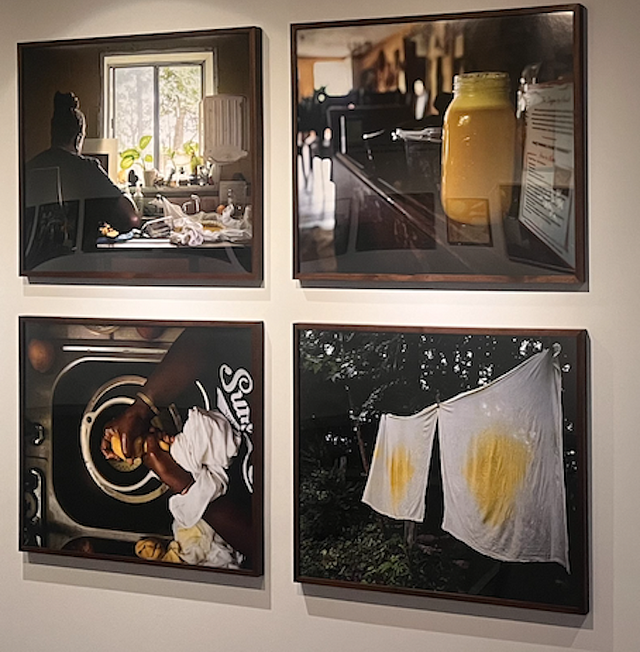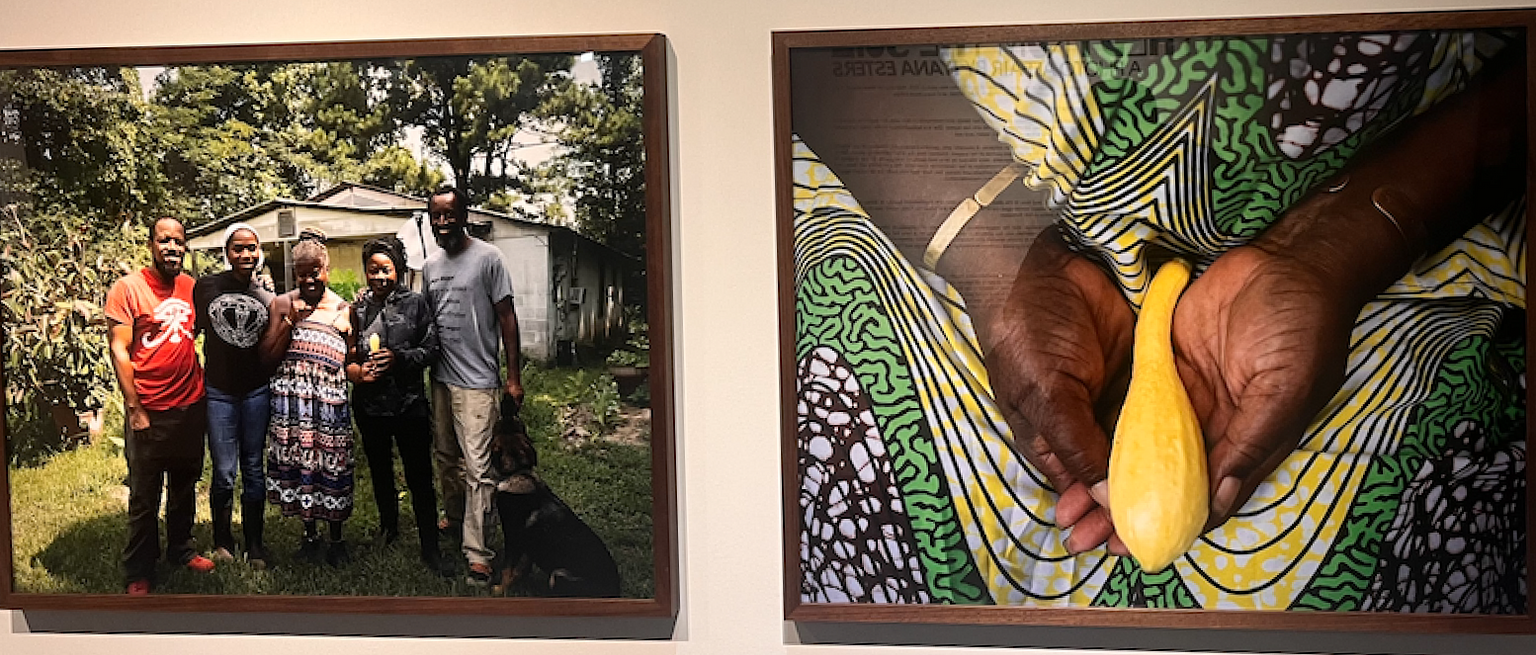Birthed from the soil
Iyana Esters
Front Door Gallery at UNR
Reno
Through Jan. 1, 2024
You have to get close to some of Iyana Esters’ photographs to make out what they show. That’s because one set of photos is printed on browned banana leaves, with hints of lively green pushed to the edges.
Once you do get up close and personal with leaves, you see images, imprinted by the sun, of simple farm tools and workers using them. Esters’ choice of the banana leaves helps the viewer understand more deeply the work that goes into running an Alabama farm.
Those photos are a part of Esters’ new multimedia portrait exhibit of Yawah Awolowo, a Black Belt organic framer and midwife, called Birthed from the soil. The exhibition is up at the University of Nevada, Reno’s Front Door Gallery in the Church Fine Arts Building through New Year’s Day.
In it Esters weaves anthotype and documentary photography with objects from Awolowo’s farm in Cuba, Alabama, to produce a multidimensional portrait of her life. For me, Esters’ technique of showing many different facets of Awolowo’s farm, its people, and its products gives the viewer a much fuller understanding of Awolowo’s life than a singular sitting portrait ever could. And the different types of media pull us into her world in a much more meaningful way.
The standard documentary photographs are my favorite part of the exhibition. Their clarity in story represents the reality of the farm best. I especially like how Esters’ highlights and venerates the people that farm the food we eat. Her photographs capture the actions that ready the soil but she also holds space for the basic images of the farm’s community members. In some ways, it’s like we’re flipping through a family album. The photos of the farm’s people raise them up as important and valued in a society that just expects food to be there at the supermarket without a thought of how it arrived there.
Esters also trains her lens on the actual output of the farm, the fruits of that labor. One photo narrowly focuses on the tiny dark purple nib of a purple hull pea as the hands of a farmworker and his splattered white T‑shirt fade into the background. The detail the viewer is able to see on the pea gives it greater status. The lowly pea is transformed into a natural wonder. Another photo shows Awolowo using a strain cloth to juice a bright yellow fruit, its color popping out amongst a cluttered kitchen. That true color made me pause briefly and think about how beauty can be incredibly simple, too.
The photos printed on the banana leaves offer something totally different and hold another form of explanatory power. The images are much harder to discern and don’t have much color. But they’re tactile and bring a little bit of Alabama to the dry mountains of Reno. Some of the leaves have bunched up in their display cases and look like rumpled sheets that got soaked in a rainstorm while they hung on a clothesline. It feels true to something that might happen on Awolowo’s farm. The remaining bits of green on the edges of the leaves also speak to the cyclical nature of the seasons and all forms of life on a farm. Once upon a time, the whole leaf was a bright green, but now it is decaying, becoming a part of the soil that will feed the next plant that will spring up in its place.
Esters also shares two recipes from Awolowo in the exhibit, one for a bright yellow juice and another for the purple hull peas. Not only do photos document the process of creating those foods, but Esters also hangs Awolowo’s strain cloths and displays raw purple hull peas in a clear box. The viewer gets to admire the ingredients that make up the recipe. And by placing them next to the art she’s created, she raises Awolowo’s domestic work to the level of a piece of art. The recipes, which are printed on the wall next to their accompanying photos, bring the story of Esters’ photographs to life. We can see some steps of Awolowo’s cooking process, giving us a deeper understanding of her work.

So few of us know anything about what running and working on a farm is like. Esters brings that reality to us through Birthed from the soil. Each of its constituent parts imparts more knowledge about Awolowo’s life, thereby sharing an incredibly rich portrait of her place in the world. It’s a powerful example of how art, and especially photography, can connect the viewer to places they never knew existed.
What else is on for Esters: One photo from her spring 2022 show at Reno’s Metro Gallery Las olas del mar is displayed on a billboard above the Wells Avenue Bridge this month through the Holland Project’s Billboard Gallery project.






